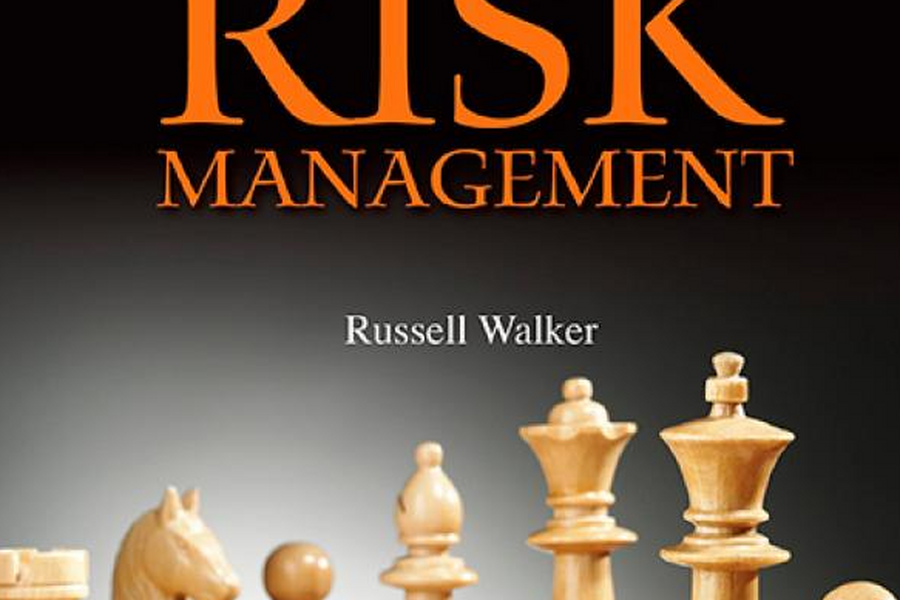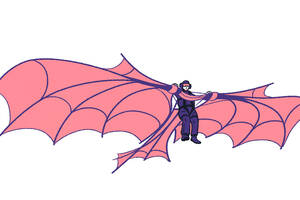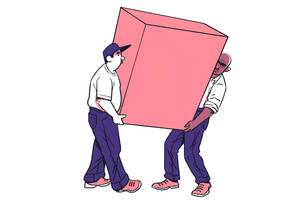Leadership Aug 4, 2014
Book Excerpt from Invent, Reinvent, Thrive
Larry Levy reinvented his real estate business as a restaurant business, but his biggest success came when he reinvented again
 |
Editor's Note: This is an excerpt from Lloyd Shefsky's Invent, Reinvent, Thrive. It has been condensed with permission from the publisher. Head here for an interview with the author, a clinical professor of managerial economics and decision sciences at the Kellogg School.
Starting in the industrial real estate market, as a broker and later as a speculator, Larry Levy accumulated 5,500 acres of land in Chicago’s collar counties (the counties abutting Cook County, where Chicago is situated). There he switched his focus from industrial real estate to office buildings, first as part of the Hawthorne Group, where he became president at age 28, and then, in 1978, as founder of the Levy Organization.
Later, Larry acquired a valuable piece of land at the corner of Michigan Avenue and Oak Street in Chicago. This property is at the preferred end of that stretch of Michigan Avenue known as “The Magnificent Mile,” which runs from the Chicago River to Lake Michigan’s Oak Street Beach. That mile-long stretch of Michigan Avenue houses the best shopping in Chicago, and the choice property that Larry acquired became the One Magnificent Mile Building, housing offices, condo apartments, retail stores, and restaurants. It was generally referred to as “One Mag Mile.”
Around the same time, Larry decided to invite his brother, Mark, to join him in opening a restaurant, D.B. Kaplan’s, a Jewish-style delicatessen. Restaurant operators almost always seek street-level locations. But Levy opened the restaurant on the top retail floor—the seventh—of Water Tower Place, a unique, new vertical mall on Michigan Avenue.
Larry brought his mother to Chicago to manage the restaurant and do the cooking. She did a great job. The deli soon became profitable. Even the peculiar seventh-floor location turned into an asset. It became the “in thing” to ride the glass-enclosed elevator to the top floor and then ride the escalator down, floor by floor, to see what new stores had opened since the last visit.
Water Tower Place became Chicago’s number one tourist attraction. The Levy team gamble had paid off. The Levy Organization was rewarded for its willingness to take risks. The firm was granted the right to open four more restaurants in the building. Larry’s firm thrived.
Cyclicality and Vulnerability—Huge Distractions
The time was 1978–1979. To build One Mag Mile, Larry had borrowed $100 million at an interest rate of prime plus one—1 percent above the prime rate. That meant that as the prime rate rose, so did the interest rate on Levy’s building loan. Eventually, the prime rate went to 20 percent, so Larry’s rate was 21 percent. In addition, the high rates made it difficult for people to get mortgages needed to buy condos and for businesses to afford new leases.
Eventually normalcy returned, and One Mag Mile filled up. But as the economy improved, new multiuse buildings on Michigan Avenue attracted tourists and local folks too, all of them craning their necks to see the newest iterations of retail outlets and restaurants. These were all competition for Larry’s Water Tower eateries. Essentially, the restaurant business was broke.
I tell my students that I believe in luck but don’t rely on it, preferring to make my own luck and to be ready to pounce when luck appears. At just the perfect time, Larry was approached by Jerry Reinsdorf, a successful former real estate developer.
Reinsdorf and some of Chicago’s most prominent people bought the Chicago White Sox baseball team in 1981. Reinsdorf asked the Levy Organization if its people would cater Comiskey Park’s sky boxes with food prepared in the group’s Water Tower Place restaurants the day before each game.
To that Levy replied, “No, we don’t do that. We’re not an institutional food service provider.” Larry felt the organization should only do what it was good at. Besides, rewarmed, day-old food wasn’t acceptable in the group’s restaurants. Therefore, it wouldn’t be tolerated by people paying small fortunes to rent sky boxes for what he saw as insular indoor seats that deprived them of a true ballpark experience.
Reinsdorf continued to pursue the Levy Organization, explaining that the new team owners were committed to spending big money on good players. They would bring the World Series to Chicago, and Larry would have front-row seats. Finally, Larry gave in. He agreed to cater the sky boxes with day-old food transported in vans with reheaters.
At the Ballpark, Day-Old Food Is a Gourmet Treat
The following year, the White Sox built 17 more sky boxes, and of course Reinsdorf asked Levy to cater those too. By then, the Levy Organization realized that it had made a significant profit on the sky box catering business. With 34 boxes, the profits were over a quarter million dollars. What’s more, the fans were raving about the food. “You people are geniuses. The food is great, sensational,” was what they heard in the media and on the street. It was still day-old food, and the Levys knew it wasn’t up to their restaurant standards. But they came to realize that the reason for the rave reviews was the fans’ low-level expectations for ballpark food.
The Levy Organization held a management retreat that year, at which the internal financial people said the cost of building a restaurant was $1.5 million. If the restaurant worked really well, it could yield a half-million dollars a year. And if it didn’t work well, the $1.5 million build-out, plus net operating losses while open, would be lost to Levy and/or the Levy investors.
What the managers realized was that one bad restaurant offset the profit of more than two good ones. And the restaurant industry is known for having far more losers than successes. On the other hand, they noted that the alternative—catering sports and entertainment venues—entailed very little investment while yielding very large profits.
At the same time, still more Chicago buildings were erected. The buildings’ new restaurants even more adversely affected the sales at Levy’s Water Tower Place restaurants. Larry and Mark followed their executives’ lead and began exploring possibilities in the sports arena business.
Between 1982 and 1987 in addition to Comiskey Park, the Levy Organization won the catering contracts for Wrigley Field and McCormick Place (the Chicago convention center), Arlington Race Track, the Lincoln Park Zoo, and Ravinia, a suburban Chicago concert facility.
Levy began serving Ravinia in 1982, when he bought Hillman’s, a catering company that owned the Ravinia catering contract at the time. Levy really bought Hillman’s for its downtown Chicago real estate, which had housed Hillman’s retail store for over 50 years. But Levy had acquired a far more valuable asset, the Ravinia catering contract, for $1 more.
“We made a concerted effort,” Larry said, “to win what became a new wave of sports facilities being built around the country.” They opened the first three in 1994, and then “there was just an incredible wave of others,” Larry said. “We wound up, in a very short period of time in Cleveland, Kansas City, St. Louis, Portland, Orlando, Los Angeles, Atlanta, Denver, Miami … We even thought about going public. We got to 20 percent market share very quickly. And we got to 50 percent market share before I sold the company. And now it’s even more.”
Coincidentally, the Disney Company decided that it could improve its food offerings by letting restaurant companies bid for the right to own and operate their own restaurants in Disney World. The Levy Organization won the competition and eventually built three restaurants there. The three were, according to Larry, “wildly successful and wildly profitable.” The Levys of course realized belatedly that they had entered a totally new type
of business.
It was obvious to Larry that the stand-alone restaurant business was high risk. Instead of relying solely on their ability to attract patrons to restaurants they owned, they relied on others—sports teams and theme parks—to provide the customers. They did so with consistency and predictability. The sports teams and theme parks increased revenues and decreased costs.
One of the reasons for the high profitability was that Disney “had many of the same characteristics as the sports business,” according to Levy. “And another reason was that our service entailed Chicago hospitality. We really care about the guests, where we win one customer at a time, and where you don’t treat the customer like a captive audience.”

Given the history of others’ poor results in catering hot dogs at sports venues and the resulting low expectations meant that Levy could really change the paradigm of a sports team owner’s expectations. In addition to the improved financial results for the Levy Organization, customers were happier. As one might expect, each new arena and stadium elevated expectations. Yet, Levy was able to far exceed even those expectations.
The sports venues would have seemed daunting to some—Levy was competing against six well-established food companies, including Aramark, Volume Services, Service America, and Delaware North. Yet, the risks were actually low. The competitors, according to Levy, were not concerned with food and service quality. Larry feels “they were all old businesses; they were all run by hacks at the time. They knew how to count the beer cups so that nobody would steal, and they knew how to make a warm hot dog, not a hot hot dog. And the buns were served right before they went stale. And basically, over the period of a year we learned that this was a huge opportunity.” Around that time, the name of the company was changed from “The Levy Organization” to “Levy Restaurants,” a clear indication of which side the group’s bread was buttered on as well as a better brand for its growing facilities catering business.
Levy notes that as a land developer he benefited from his understanding of the economics of real estate. And the economics of a new baseball stadium was about specific real estate—the premium (club and sky box) seats and special restaurants that served them. Those old catering companies, the old establishment of the industry, were not capable of providing competitive food and service.
“We learned that the demand created totally elastic pricing. You could charge just below gouging. And in this sky box business, the person paying for it is not present. The people in the box, in almost all cases, were the best customers of the company that leased the box. The most important person in making a sale, a presale of lots of food and beverage, was the secretary to the lessee’s CEO.”
Artwork by Yevgenia Nayberg
Shefsky, Lloyd. Invent, Reinvent, Thrive. New York, NY: McGraw-Hill, 2014.



